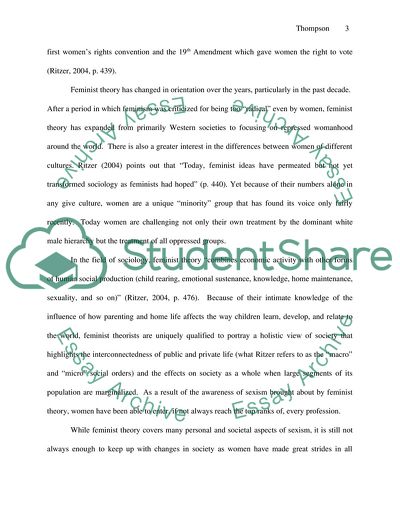Cite this document
(New Feminist Theory Perspectives on Sexism in the Workplace Essay Example | Topics and Well Written Essays - 1250 words, n.d.)
New Feminist Theory Perspectives on Sexism in the Workplace Essay Example | Topics and Well Written Essays - 1250 words. https://studentshare.org/sociology/1709346-new-feminist-theory-perpectives-on-sexism-in-the-workplace
New Feminist Theory Perspectives on Sexism in the Workplace Essay Example | Topics and Well Written Essays - 1250 words. https://studentshare.org/sociology/1709346-new-feminist-theory-perpectives-on-sexism-in-the-workplace
(New Feminist Theory Perspectives on Sexism in the Workplace Essay Example | Topics and Well Written Essays - 1250 Words)
New Feminist Theory Perspectives on Sexism in the Workplace Essay Example | Topics and Well Written Essays - 1250 Words. https://studentshare.org/sociology/1709346-new-feminist-theory-perpectives-on-sexism-in-the-workplace.
New Feminist Theory Perspectives on Sexism in the Workplace Essay Example | Topics and Well Written Essays - 1250 Words. https://studentshare.org/sociology/1709346-new-feminist-theory-perpectives-on-sexism-in-the-workplace.
“New Feminist Theory Perspectives on Sexism in the Workplace Essay Example | Topics and Well Written Essays - 1250 Words”. https://studentshare.org/sociology/1709346-new-feminist-theory-perpectives-on-sexism-in-the-workplace.


